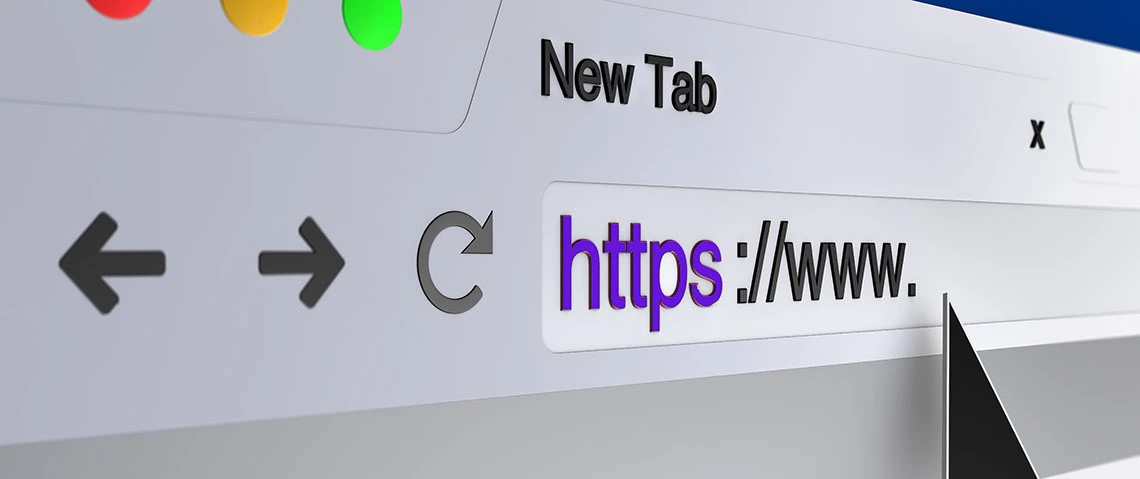
What is a domain name?
Understand the concept behind those web addresses you type into your internet browser and see how you can apply this knowledge when deciding on your own domain name.
- Jump To
- What is a Domain Name
- Parts of a Domain Name
- The Domain Name System (DNS)
- Choosing Your Domain Name
A Domain Name is simply an internet address. It is unique and generally made to be easy to remember. Just as physical locations on Earth have addresses (like your house, school, workplace), virtual locations on the internet also have addresses. For example, if you want to visit the White House in the USA, you would travel to ‘1600 Pennsylvania Avenue NW, Washington, DC 20500, USA’. In the same way, if you own a website at www.bestfriend.com, anyone who wants to visit your website will have to travel, in a manner of speaking, to that address.
The real identity of a Domain Name is an IP Address. An IP Address is a complex numerical string (e.g. 142.251.214.142) and thanks to the Domain Name System(DNS), we as humans can use simple, easy to understand and remember Domain Names like, www.jaskin.tech, www.google.com, www.facebook.com etc.
Parts of a Domain Name

The different parts of a Domain Name are seperated by dots or periods. Starting from the far right we have
- Top Level Domain
- Second Level Domain
- Sub Domain
Top Level Domain:
A Top Level Domain is the general extention. It comes next to the website’s name. There are alot of Top Level Domains out there but ‘.com’ is the most popular with over 47% of websites using it.
Some Top Level Domain examples are .net, .org, .tech, .store, .info, .io, .online etc.
Using popular Top Level extensions can give your website credibility but the downside is finding an available and relevant name as most are already taken.
Second Level Domain:
The Second Level Domain is the more specific and personalized part of a Domain Name.
A Second Level Domain is to the left of the Top Level Domain. For example in www.google.com, the .com is the Top Level Domain and .google is the Second Level Domain. Unlike the Top Level Domain, you have free liberty to name the Second Level Domain whatever you like. This is where brand name usually goes.
To get your Second Level Domain, you would have to buy and register it. You can read this blog on how to buy a Domain Name
Sub Domain
It is an extension of your domain and can be used to represent a part of your website. A website can have numerous Sub Domains and each can be named anything you want. For example ‘blogs.jaskin.tech’, ‘shop.jaskin.tech’, ‘school.jaskin.tech’, ‘party.jaskin.tech’, ‘lalalala.jaskin.tech’ etc, can all be Sub Domains of ‘jaskin.tech’.
The Domain Name System (DNS)
 Us Humans communicate with computers in our human languages and programmed systems can interact with us using languages we understand. Computers also possess their own language that they use to communicate with one another.
Us Humans communicate with computers in our human languages and programmed systems can interact with us using languages we understand. Computers also possess their own language that they use to communicate with one another.
When you type a Domain Name into your browser, it is translated from ‘human language’ into ‘computer language’ to what is known as an IP Address. An IP Address is a string of numbers that represents the real address of the website or internet location you are visiting. For example, when you type “142.251.214.142” into your web browser it will take you to “www.google.com”.
Of course, you understand why Domain Names were invented because you can just imagine the pain if you had to type “142.251.214.142” everytime you wanted to Google something. Domain Names are a great invention because they allow us to surf the web by using easy to remember, human readable text instead of a string of numbers.
The system that makes it possible for you to type ‘www.jaskin.tech’ and get directed to the proper location is known as DNS, or Domain Name System. The DNS is a system that translates human-readable domain names into their IP Address. It acts as the internet’s address book. For example, when you type “www.jaskin.tech” into your internet browser, your device sends a message to the DNS asking for the IP Adress of “www.jaskin.tech”, the DNS then gives your device the IP Address and then your device ‘travels’ to that location. The conversation may go something like this:
You: *Types ‘www.google.com’ into your web browser*
Your Device: *Can’t understand the meaning of ‘www.google.com’. So goes to the DNS and says*
Your Device: Hi DNS, can you please tell me the meaning of ‘www.google.com’.
DNS: Sure, it means ‘142.251.214.142’.
Your Device: Thank you.
Your Device then goes to the IP Address, displays the website, and you can then google whatever you want. Of course, this whole process takes miliseconds to complete and is a little more complex than the above.
Choosing your Domain Name
Naming your website is just as important as naming your child. Choose a wrong name - maybe Osama bin Adolf - and you’ve set that child up for trouble.
Your aim in naming your website should be to select a name that is memorable, brandable and aligns with your goals. Here are some best practices:
- Keep it Simple and Memorable
- Consider Keywords
- Choose the right Top Level Domain - .com, .org, .tech etc
- Check Availability - Make sure someone has not bought it yet
- Keep it Broad
- Secure Social Media Handles
- Test it out
Read more about things to consider when choosing your domain name.

